Rubber Plant Bugs: Fighting Pests On A Rubber Plant
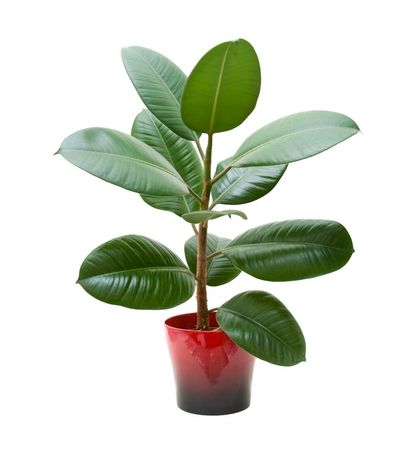

Rubber tree (Ficus elastica) is an impressive plant with huge, shiny leaves, but this cold-sensitive plant survives outdoors only in very warm climates. For this reason, it is usually grown indoors. Although healthy rubber tree plants tend to be pest resistant, they can be infested by several sap-sucking pests. What to do if you notice rubber plant insects? Read on for helpful tips.
Pests on a Rubber Plant
Here are the most common rubber plant insects you may come across:
Aphids are tiny, pear-shaped pests that gather en masse on the undersides of leaves or the joints of leaves and stems. The pests are usually green, but different species may be red, brown, black, or yellow. Aphids damage rubber trees by sucking the sweet nectar from the leaves.
Scale are tiny rubber plant pests that attach themselves to all parts of the plant and, like aphids, they feed on sweet plant juices. Scale pests may be either armored scales, with a plate-like outer covering, or soft, with a waxy or cottony surface.
Spider mites are difficult to see with the naked eye, but they are serious rubber plant bugs that puncture leaves to draw out the nectar. You know mites are on the plant because of their telltale webs. They often appear when conditions are dry and dusty.
Thrips are tiny rubber plant insects with wings. The insects, which may be black or straw-colored, tend to jump or fly when disturbed. Thrips are more troublesome for outdoor rubber tree plants, but they can also infest plants grown indoors.
What to Do About Pests on a Rubber Plant
Insecticidal soap sprays are usually effective against rubber plant bugs, but you may need to re-spray every couple of weeks until the pests are under control. Use a commercial product, as homemade sprays are often too harsh for indoor plants. Neem oil is also an option.
Gardening tips, videos, info and more delivered right to your inbox!
Sign up for the Gardening Know How newsletter today and receive a free download of our DIY eBook "Bring Your Garden Indoors: 13 DIY Projects For Fall And Winter".
Horticultural oils kill pests by suffocation and are especially effective against difficult rubber plant pests like scale and thrips. Read the label carefully, as some indoor plants are sensitive to the oils. Cover furniture before applying.
Chemical insecticides should be used only as a last resort. If you use chemicals, be sure they are registered for indoor use.

A Credentialed Garden Writer, Mary H. Dyer was with Gardening Know How in the very beginning, publishing articles as early as 2007.
-
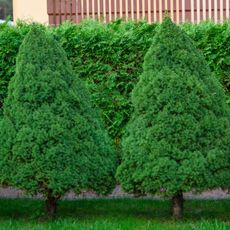 Try These 5 Types Of Spruce Trees – Easy Ways To Add Evergreen Beauty To Every Garden
Try These 5 Types Of Spruce Trees – Easy Ways To Add Evergreen Beauty To Every GardenYou might not have the largest yard or plot, but that doesn’t mean you can’t grow the mighty spruce. These 5 types of spruce trees are very adaptable to different spaces
By Teo Spengler
-
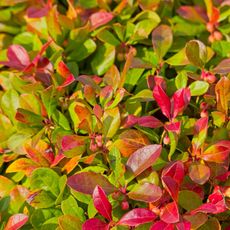 Holiday Evergreen Plants: 9 Unique Evergreens For Holiday Cheer That Can Last All Year!
Holiday Evergreen Plants: 9 Unique Evergreens For Holiday Cheer That Can Last All Year!Not all holiday evergreen plants conform to the traditional standard, so get ready to broaden your mind and brighten your festive spirits with these unique holiday evergreens
By Janey Goulding
-
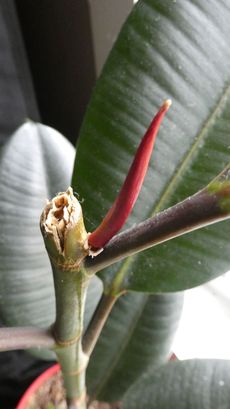 Rubber Tree Branching Tips: Why Won’t My Rubber Tree Branch Out
Rubber Tree Branching Tips: Why Won’t My Rubber Tree Branch OutThe rubber tree plant (Ficus elastica) can sometimes be temperamental, growing upward and refusing to grow side branches. There are a few reasons why your rubber tree won’t branch. Click on the following article and get your rubber tree branching this year.
By Becca Badgett
-
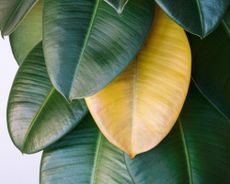 Yellow Rubber Tree Leaves – Reasons For Yellowing Leaves On A Rubber Plant
Yellow Rubber Tree Leaves – Reasons For Yellowing Leaves On A Rubber PlantNothing disrupts a plant's aesthetics more than the presence of unsightly yellow leaves. Right now, I seem to have lost my gardening mojo because my rubber plant leaves are turning yellow. Find a solution for yellow rubber tree leaves in this article.
By Shelley Pierce
-
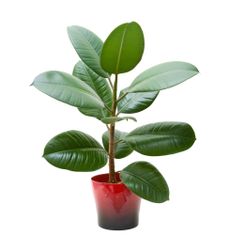 Rubber Tree Plant Potting – When Does Rubber Plant Need A New Pot
Rubber Tree Plant Potting – When Does Rubber Plant Need A New PotRubber trees make great indoor potted plants, but at some point you'll need to give them more room. Use the information found in this article to learn about rubber tree plant potting and when repotting is necessary. Click here for more info.
By Gardening Know How
-
 Watering A Rubber Plant: How Much Water Do Rubber Tree Plants Need
Watering A Rubber Plant: How Much Water Do Rubber Tree Plants NeedRubber tree plants are fairly easy to care for but dislike being moved and are fussy about water. Rubber plant watering must provide matching moisture to what the plants would find in their native Southeast Asian habitat. Learn about watering these plants here.
By Bonnie L. Grant
-
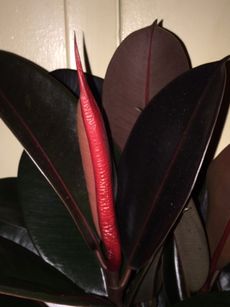 Red Sheath On Ficus: Does Rubber Plant Flower
Red Sheath On Ficus: Does Rubber Plant FlowerIf you've grown a rubber tree plant, especially the Burgundy type, and noticed what appears to be a beautiful flower unfurling, you might begin to wonder if rubber plant blooms or if this is your imagination. Find out in this article.
By Gardening Know How
-
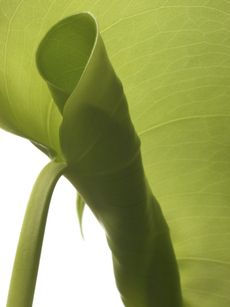 Leaf Curl On Rubber Plants: What Causes Rubber Plant Leaves To Curl
Leaf Curl On Rubber Plants: What Causes Rubber Plant Leaves To CurlAlthough rubber tree plant is relatively trouble-free, it can fall prey to various pests and diseases that can cause leaf curl on rubber plants. What causes rubber plant leaves to curl? There are several possible reasons. This article will help.
By Mary H. Dyer
-
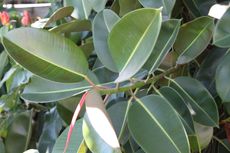 Rubber Plant Information: Taking Care Of A Rubber Plant Outdoors
Rubber Plant Information: Taking Care Of A Rubber Plant OutdoorsMost consider the rubber tree a large houseplant and find it is easy to grow and care for indoors. However, some people ask about growing outdoor rubber tree plants. Read here to find out.
By Becca Badgett
-
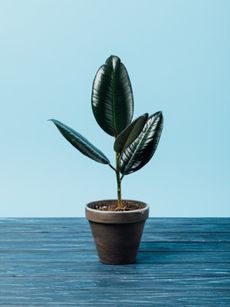 How To Start A Rubber Tree Plant: Propagation Of A Rubber Tree Plant
How To Start A Rubber Tree Plant: Propagation Of A Rubber Tree PlantRubber trees are hardy and versatile house plants, which leads many people to wonder a??How do you get a start of a rubber tree plant?a?? Propagating rubber tree plants is easy and this article will help.
By Heather Rhoades